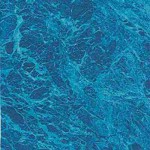Spring is here and, as the warmer weather coaxes us into the outdoors more, it’s time to get your pool ready to swim.
Is your pool too cold? Green and neglected? Full of leaves and debris? Or, all of the above? The solution is easy…
A cold pool is easily transformed into an oasis with a solar pool blanket. They raise your pool water temperature by up to 8 degrees C and can extend your swimming season by up to 3 months a year, so you can start swimming sooner.
A green pool usually means algae has started to grow in the water, due to lack of maintenance. Super chlorination is the quick fix, backed up with regular testing and adjusting to get the chemical balance just right for swimming again. Remember to remove your pool cover when super chlorinating!
If a pool full of leaves is getting you down, simply cover up with a fitted pool cover. There are many different styles available for both inground and above ground pools, salt water and chlorinated, specifically for keeping your pool leaf-free. They are cost effective and can pay for themselves in the first year, due to how much money you’ll save on chemicals and water. Plus, you’ll have more free time to swim in your crystal clear pool.

